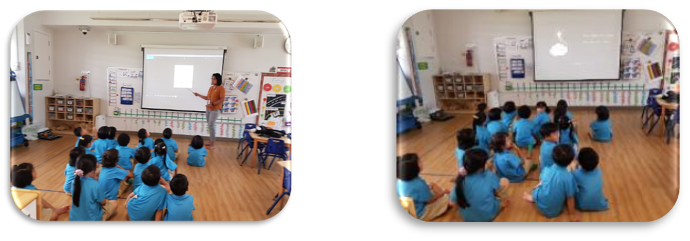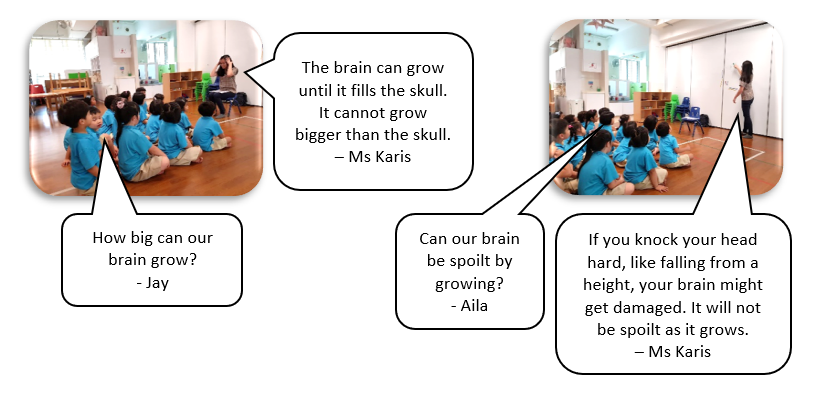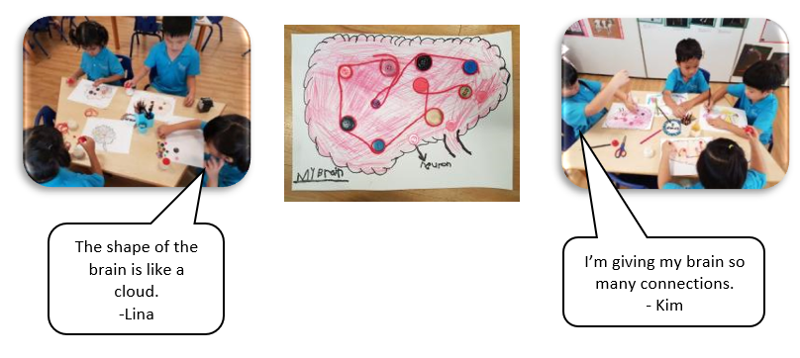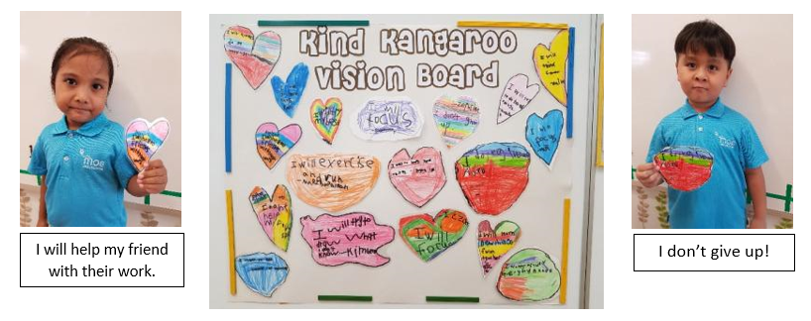‘WoW’ Project – How Do Our Brains Grow?
Overview
Objectives
- Find out how the brain grows from a variety of sources
- Set small achievable goals to help their brain grow stronger
Phases of the 'WoW' Project
The ‘WoW’ Project takes place over three phases – I Wonder, I Find Out, and I Know.
I Wonder
In the ‘I Wonder’ phase, children would wonder what they would like to find out, identify the topic of investigation, and share what they already know about the topic. Based on children’s interest in the brain, the teacher facilitated a discussion to find out what children knew, what they wanted to know and how they would find out more about the topic. Children’s responses and ideas were recorded by the teacher in the K-W-H chart.
I Find Out
What do we Know? | What do we want to know? | How do we find out? |
|
|
|
In the ‘I Find Out’ phase, children discuss, plan, and carry out their investigations to find out the answers to their questions. For this project, the children carried out the investigations using the following two ways:
a. Internet Search
As suggested by one of the children, Child A, the teacher searched the Internet and found information about how the brain grows. She shared the information with the children. Through the teacher’s sharing, here are some of the things that the children found out:
- The brain would start growing when we were still in our mummies’ tummy.
- At 29 days, the brain began to form.
- The brain would continue to grow in size into adulthood until it filled up the space in the skull.

After watching the video, the
children found out that there were over 100 billion nerve cells or neurons that
made up the brain. These nerve cells would make connections when we were
learning a new skill or knowledge. When the brain was able to think faster, it
showed that the brain was growing smarter.
b Guest Speaker - Ms Karis (student doctor)

The children found out from Ms Karis that our brains would grow smarter when more and more neurons made bonds with one another. When you learn new things, the tiny connections in the brain multiply and get stronger. The more that you challenge your mind to learn, the more your brain cells grow. Therefore, the children played the game, ‘Neurons chains’ to explore this concept

The children
would stand apart from one another like individual neurons. A ‘neuron leader’ would call out a number and
the rest of the ‘neurons’ would hold hands to form chains according to the
number called out.
Through this game, the children saw how their human chains grew longer and stronger as they connected with each other. This helped them to understand that the more connections there were in the brain, the stronger their brain was!
I Know
In the ‘I Know’ phase… the children consolidated their findings and made inferences from the KWHL chart through the various activities.
K-W-H-L Chart | |||
What do we Know? | What do we want to know? | How do we find out? | What we have Learnt? |
|
|
|
|
Based on their earlier investigations, the children learnt that the brain could grow in two ways:
i. Physically
The brain grows in size as we grow older. However, the brain cannot grow bigger than the size of our skull.
ii. Intellectually
The brain grows smarter and thinks faster when the neurons make connections with one another. We need to keep on trying and do
our best at work for that to happen.
With this new knowledge about neurons and the connections
that they made in the brain, the children worked on an activity to reflect on what
they have learnt.

The children decided to conclude their ‘WoW’ project by
creating a vision board. They created a collage of their goals on the ways that
they could help their brains grow smarter. The children placed the vision board
up in class to look at it daily and commit to work towards the goals on it.

The exploration of the
functions of the brain through the ‘WoW’ project enabled children to take
charge of their own learning. As we nurture children to develop a growth
mindset, they progressively make connections using their prior knowledge to
persevere in their learning pursuit. As adults, we play a crucial role in
igniting their curiousity and discovery of the world.
